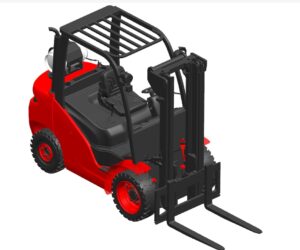The Ultimate Guide to Lift Truck Safety and Maintenance
Lift trucks, or forklifts, are vital in various industries for moving heavy loads efficiently. Ensuring their safe operation and regular maintenance is crucial to prevent accidents and downtime. Here’s a comprehensive guide to mastering lift truck safety and maintenance.
Safety First: Essential Practices
Training and Certification Proper training is mandatory for all lift truck operators. Certification ensures that operators are well-versed in safety protocols and operational techniques. Regular refresher courses help keep their skills sharp and up-to-date.
 Forklift | China Manufacturer Trade Price on Materials Handling lift Truck, Stackers, Industrial vehicles, Scrubbers, Transporters brands Sale Price Buy Online | Forklift
Forklift | China Manufacturer Trade Price on Materials Handling lift Truck, Stackers, Industrial vehicles, Scrubbers, Transporters brands Sale Price Buy Online | ForkliftPre-Operational Inspections Conducting pre-operational checks is vital to ensure the lift truck is in proper working condition. This includes:
Checking fluid levels (hydraulic oil, engine oil, and coolant).
Inspecting tires for wear and proper inflation.
Verifying that controls, brakes, lights, and horns are functioning.
Proper Load Management Managing loads correctly prevents tipping and accidents. Key practices include:
Not exceeding the lift truck's load capacity.
Ensuring loads are balanced and secure.
Keeping the load low while moving and lifting only when necessary.
Maintaining clear visibility.
Safe Operating Techniques
Always wear appropriate PPE (helmets, gloves, safety shoes).
Adhere to facility speed limits and avoid sudden movements.
Use seat belts and proper entry/exit techniques.
Be cautious of blind spots and communicate clearly with others in the workspace.
Maintenance: Keeping Your Lift Truck in Top Shape
Regular Inspections Routine inspections help identify potential issues before they escalate. Key areas to check include:
Hydraulic systems for leaks.
Engine components for wear and tear.
Electrical systems for proper function.
Scheduled Servicing Following the manufacturer’s recommended service schedule ensures the lift truck remains in optimal condition. This involves:
Regularly changing oils and filters.
Inspecting and replacing worn parts.
Ensuring battery maintenance for electric lift trucks.
Timely Repairs Addressing any mechanical issues promptly is crucial. Delaying repairs can lead to more severe problems and potentially dangerous situations. Always use genuine parts and qualified technicians for repairs.
Record Keeping Maintain detailed records of all inspections, maintenance, and repairs. This helps in tracking the lift truck’s condition and planning future maintenance activities.
Conclusion
Lift truck safety and maintenance are critical for ensuring a safe and productive work environment. By adhering to these best practices, operators can minimize the risk of accidents, extend the lifespan of their equipment, and maintain operational efficiency. Regular training, thorough inspections, and timely maintenance are key to achieving this goal.




